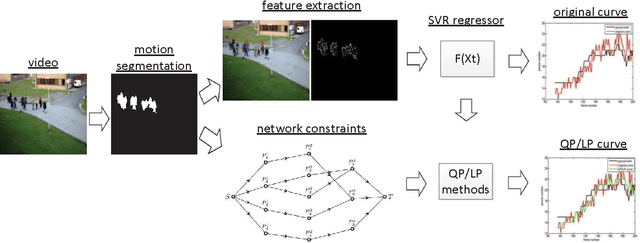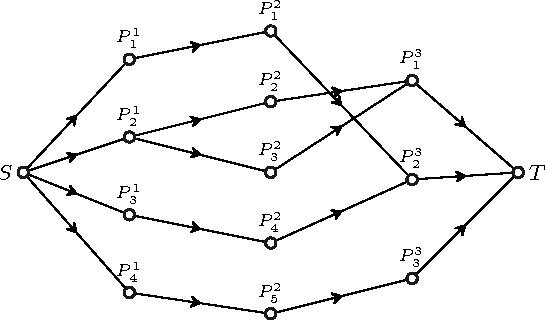Crowd Counting Considering Network Flow Constraints in Videos
Paper and Code
Dec 15, 2017



The growth of the number of people in the monitoring scene may increase the probability of security threat, which makes crowd counting more and more important. Most of the existing approaches estimate the number of pedestrians within one frame, which results in inconsistent predictions in terms of time. This paper, for the first time, introduces a quadratic programming model with the network flow constraints to improve the accuracy of crowd counting. Firstly, the foreground of each frame is segmented into groups, each of which contains several pedestrians. Then, a regression-based map is developed in accordance with the relationship between low-level features of each group and the number of people in it. Secondly, a directed graph is constructed to simulate constraints on people's flow, whose vertices represent groups of each frame and arcs represent people moving from one group to another. Then, the people flow can be viewed as an integer flow in the constructed digraph. Finally, by solving a quadratic programming problem with network flow constraints in the directed graph, we obtain consistency in people counting. The experimental results show that the proposed method can reduce the crowd counting errors and improve the accuracy. Moreover, this method can also be applied to any ultramodern group-based regression counting approach to get improvements.
 Add to Chrome
Add to Chrome Add to Firefox
Add to Firefox Add to Edge
Add to Edge